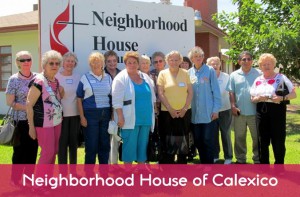March 3, 2015
Obesity rates are soaring in America, and our dietary choices are a key reason why.
According to the Centers for Disease Control and Prevention, more than one-third of adults in the U.S are obese, leading to conditions such as heart disease, stroke, type 2 diabetes, and certain types of cancer. These diseases then require treatment, leading to expenses and treatments totaling an estimated $147 billion in 2008. Put into perspective, the CDC cites that “the medical costs for people who are obese were $1,429 higher than those of normal weight.”
Unfortunately, this trend spills into the lives of our youth, as well. In the U.S., obesity affects 17 percent of all children and adolescents, three times the clip from just one generation ago.
Why is this, and what can we do?
One of the leading known causes of obesity is a poor diet, one high in sugar and saturated fats and low in nutrients and fiber. Sugary drinks—sodas, energy drinks, and even “healthy” sports drinks and juice boxes—are more readily available than ever. From schools to the gas station on the way home, these unhealthy options are available and convenient for children and adults alike.
On the food side, we see deep-fried, high-salt, high-fat, processed options everywhere. That drive-thru cheeseburger might be convenient, but its impact on your health is anything but!

In addition, the Bayside Community Center serves as a distribution site for food bands in San Diego, and they also have their own community garden, the Linda Vista Community Garden. This garden operates on a 2,100-foot plot, and community members are encouraged to rent space to grow organic veggies. The Linda Vista Community Garden is also exploring the opportunity to set up shop at the Linda Vista Farmer’s Market, where they hope to begin selling organic, locally grown veggies by January 2015.

The best way I’ve personally found to fight these problems is to begin cooking your own meals and to pack snacks when you know you’ll be away from the house for an extended period of time.
Healthy foods should be low-glycemic and packed with vitamins and nutrients, think vegetables, fruits, nuts, whole grains, lean meats like chicken and turkey, and fish. This site, optimalfoods.org, has some great information to get you started if you’re feeling overwhelmed!
For a perfect on-the-go snack, take raw veggies such as celery, carrots, broccoli, or cauliflower or fruits, like blueberries and strawberries. Fruits in particular provide a great source of natural sugars—much better for you than the high-fructose corn syrup found in nearly every packaged food and drink these days!
If we first understand that our current poor eating habits are leading us down a path straight to obesity, we can then start to put these tips in place. A healthy diet is really not too involved or complicated, and you’ll find yourself coming up with creative, delicious food options in no time!
It may seem overwhelming at first, and habits are really hard to break, but just start with one thing. Maybe reduce the number of sodas you drink each day. Instead of downing three cans, try cutting back to two and replacing that third can with a bottle of water. After about a week, try cutting back to one can a day. Once you are successful with that change, try another one. Maybe instead of a candy bar, a good replacement snack would be a handful of raw almonds. After several successes, you’ll be ready to tackle more than one change at a time!

Leave a comment and we’ll discuss.
-Nancy Sasaki, Executive Director
Allaince Healthcare Foundation
NSasaki@AllianceHealthcareFoundation.com
About Alliance Healthcare Foundation
Alliance Healthcare Foundation is a San Diego-based nonprofit which works with nonprofit, government and community agencies to advance health and wellness throughout the San Diego and Imperial Counties. AHF works to serve the most vulnerable – the poor, working poor, children and homeless by providing grants, advocacy and education to support its region.
To learn more about AHF visit: AHF on Facebook, AHF on Linkedin, AHF on Google+, AHF on Youtube, AHF on Twitter
To learn more about our grantees visit here: AHF’s Grantee Page
Related News

Jul 13, 2023
July partner news
Partner News + Opportunities Grants, Pro Bono Consulting and Conferences […]

Jul 12, 2022
Imperial Valley Wellness Foundation: Opens 2022 Mission Support Applications
Imperial Valley Wellness Foundation Opens Mission Support Funding Application El […]

Jun 14, 2022
AHF News June 2022
Wanted: Senior Director of Strategy & External Relations and other […]

